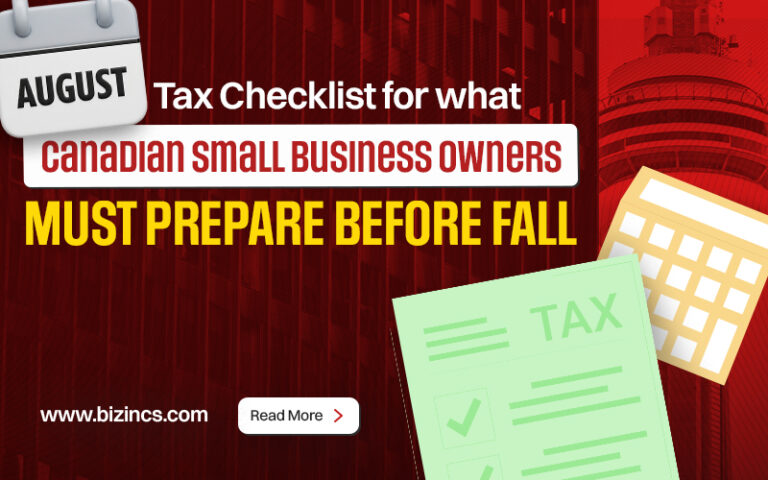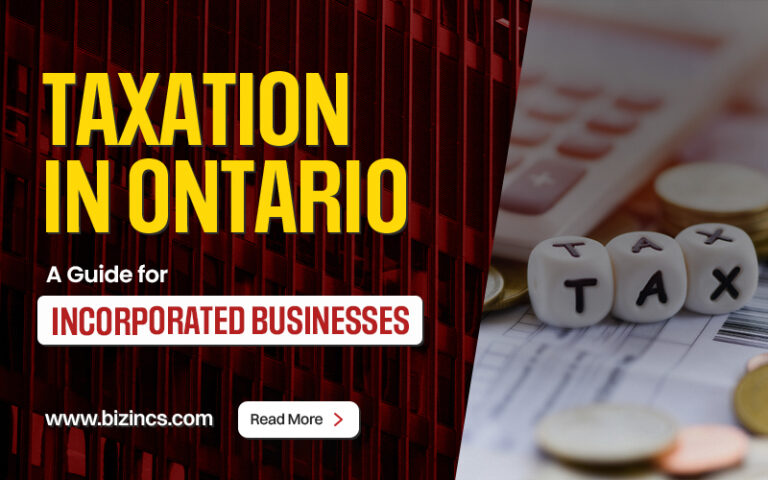Step-by-Step Guide to Filing Your First Canadian Tax Return as a Newcomer
Filing your first time tax filing in Canada can feel overwhelming. But don’t worry, this Canadian tax guide for immigrants will help you every step of the way. Whether you’re a student, worker, or new resident, this blog is for you.
Let’s explore how to file taxes in Canada as a newcomer.
Understand If You Need to File
A newcomer tax return Canada is usually required even with no income. Most newcomers file a return to claim benefits or build a history. The Canada Revenue Agency (CRA) expects you to file annually.
You’re considered a resident for tax purposes upon arriving. This applies if you’ve established strong ties in Canada. These ties include housing, a job, or dependents living here.
Know the Tax Deadlines in Canada
The Canadian tax year runs from January 1 to December 31. Tax returns are due by April 30 of the following year. If you’re self-employed, the due date is June 15, but any balance owed is still due by April 30.
Missing the deadline can result in interest or penalties. So always mark these dates on your calendar in advance.
Register for a Social Insurance Number (SIN)
To file a newcomer tax return Canada, you need a SIN. The Social Insurance Number is a unique nine-digit code. It’s required for jobs and accessing government services.
You can apply online or visit a Service Canada office nearby. Bring your immigration documents and identification to complete the process smoothly.
Set Up a CRA MyAccount
The CRA MyAccount gives secure access to tax information online. You’ll need this to manage your tax profile efficiently. Here, you can view balances, receive notices, and update contact details.
It’s also where you set up direct deposit to get refunds faster. Visit the CRA site and follow the steps to register.
Gather All Required Tax Documents
Before learning how to file taxes in Canada, gather all your papers. Here’s a list of essential documents for first-time tax filing in Canada:
- T4 slips (for employment income)
- T2202 (for tuition and education amounts)
- Rent receipts or property tax bills
- Bank interest statements (T5)
- Receipts for medical or moving expenses
- Your immigration documents (Record of Landing, etc.)
Staying organized will save you stress later when filing taxes.
Determine Your Residency Status
The Canadian tax guide for immigrants stresses knowing your residency type. CRA has four categories: resident, non-resident, deemed resident, or deemed non-resident. Most newcomers fall under the resident category for taxes.
This means you report worldwide income in your Canadian tax return. The CRA offers tools to help clarify your status online.
Choose a Tax Filing Method
There are multiple ways to file your newcomer tax return Canada:
a. NETFILE Using Tax Software
Use CRA-certified software like SimpleTax, Wealthsimple Tax, or TurboTax. These programs guide you step-by-step. Most are free and support how to file taxes in Canada for newcomers.
b. Paper Return
You can file by mail using a printed T1 General package. However, this takes longer and can’t be tracked online.
c. Tax Clinics
CRA tax tips for newcomers recommend using free tax clinics. The Community Volunteer Income Tax Program (CVITP) helps eligible newcomers file returns at no cost.
Report Your Worldwide Income
Many immigrants are surprised to learn about this rule. Canadian residents must report all income, including foreign sources.
This includes rental income, foreign pensions, and overseas investments. Convert all amounts to Canadian dollars using the annual exchange rate.
Even if taxes were paid abroad, reporting is still mandatory here.
Apply for Tax Credits and Benefits
One key benefit of filing is accessing credits and refunds. Below are important credits newcomers should know:
a. GST/HST Credit
A tax-free quarterly payment for low/moderate-income individuals. File your return to be automatically considered for this.
b. Canada Child Benefit (CCB)
If you have children under 18, you may qualify for this. It’s a monthly payment to support child-rearing costs.
c. Climate Action Incentive Payment (CAIP)
For residents of certain provinces like Ontario, Alberta, or Manitoba. Paid quarterly and helps offset carbon taxes.
d. Medical and Tuition Credits
Keep receipts for all tuition or medical costs in Canada. You might get partial credit against your income tax due.
These are vital CRA tax tips for newcomers filing for the first time.
Claim Moving Expenses (If Applicable)
If you moved to Canada to work or study full-time, you may qualify. The CRA allows certain moving expenses to be deducted. This includes travel, storage, and temporary accommodation costs.
You must have moved at least 40 kilometers closer to your new job or school. File Form T1-M to claim this deduction correctly.
File Electronically for Speed and Security
The CRA recommends filing your return electronically using NETFILE. It’s secure, fast, and confirms your return is received.
Most Canadian tax software supports how to file taxes in Canada as a newcomer. You’ll also get refunds faster using direct deposit.
Don’t Forget Provincial or Territorial Credits
Canada has both federal and provincial taxes. Each province offers unique tax benefits or deductions.
For instance, Ontario offers the Ontario Trillium Benefit. Alberta has unique climate action incentives. Check your local provincial site to know what’s available to you.
Understand the Notice of Assessment (NOA)
After filing, the CRA sends a Notice of Assessment. This document confirms your return was processed and shows results.
It outlines refunds, amounts owed, or any issues spotted. Store this safely—it may be needed for visa renewals or loans. It’s your official tax document for the year.
Learn About Tax Instalments (If Required)
If you owe tax consistently, CRA may ask for installments. This applies if your tax owing is more than $3,000 in a year.
Instead of paying one lump sum, you’ll make quarterly payments. This helps avoid large tax bills and potential interest charges.
Keep Tax Records for At Least Six Years
Always retain a copy of your filed tax return and receipts. The CRA can request proof for up to six years.
This includes pay stubs, receipts, and communication from tax software. Store these documents physically or in a secure cloud system.
Plan Ahead for Next Year’s Filing
Start keeping receipts and tracking income from January onward. File on time every year to remain eligible for benefits.
The more organized you are, the smoother next year will be. Consider using budgeting apps to track deductible expenses.
What If You Make a Mistake?
Don’t panic if you make an error on your first time tax filing Canada. The CRA lets you amend returns through CRA MyAccount.
Submit a T1 Adjustment Request (T1-ADJ) with corrected information. You can also do this via your tax software if supported.
Use Multilingual CRA Services if Needed
If English or French isn’t your first language, don’t worry. CRA offers translation support in multiple languages.
Visit their website or call for help in your native language. These services are a lifeline for immigrants struggling with tax terms.
Watch Out for Tax Scams
Scammers often pose as CRA agents, especially during tax season. They may ask for personal info or payments urgently.
Remember: CRA will never ask for passwords or cryptocurrency. Always verify calls, emails, or texts before responding. Contact CRA directly if unsure about a request.
Get Help from Tax Experts (If Needed)
If your tax situation is complicated, consult a tax advisor. Newcomers with business income or overseas assets may need assistance.
Many accountants specialize in newcomer tax return Canada scenarios. You may pay a fee, but avoid mistakes that cost more.
Summary Checklist – What to Do
Here’s a recap checklist for first time tax filing Canada:
- Get a SIN
- Set up CRA MyAccount
- Gather all tax-related documents
- Choose a tax filing method (software, paper, or clinic)
- Report worldwide income
- Claim tax credits and benefits
- File by April 30
- Keep your Notice of Assessment
- Save all records
- Plan ahead for next year
Conclusion
Filing your first tax return in Canada as a newcomer doesn’t have to be stressful. With the right resources, support, and preparation, you’ll be fine. This Canadian tax guide for immigrants is meant to simplify the process. Remember that the CRA has many tools and programs for assistance.
If you’re still unsure how to file taxes in Canada, start small. Use CRA-certified tax software or visit a local free tax clinic. Filing taxes is part of becoming a financially responsible resident. You’re building a strong foundation for your life in Canada.
Don’t leave valuable benefits on the table! Filing your Canadian tax return correctly is your gateway to essential credits and a strong financial future.
Click here to connect with a trusted tax expert – Bizincs specializing in newcomer situations and ensure you get every dollar you deserve.






